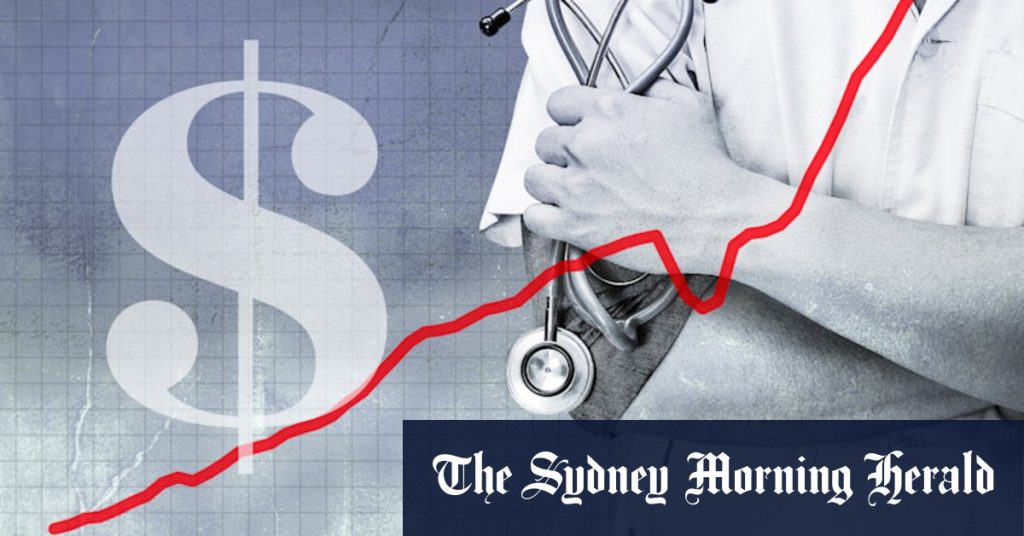The increasing penetration of specialist services in Australia since 2010 has led to significant changes in out-of-pocket healthcare costs. Over the past four years, the average out-of-pocket cost for a GP specialist visit has grown from $45 to $78 in real terms. This higher cost reflects the premium placed on specialist services compared to ordinary GP visits. Notably, one-third of Australians reported visiting specialists less than a year, with those choosing to go public often facing higher fees due to reliance on their personal time. Public specialists, while legitimate, may find it difficult to compete with renowned private specialists within the same profession.
While private specialists are likely to be the hardest to compete with, public specialists do not face such barriers. The median cost of a private GP specialist’s first rounding-up prospective appointment has risen by as much as $100 over the past four years. Yet, when patients seek a public specialist, their out-of-pocket costs have remained relatively stable at around $37 to $67. This highlights the separate pressures society faces when choosing whether to follow public or private pathways, even when both offer comparable service levels.
The report also identifies significant challenges in ensuring proper care. For example, over five years, 25% of nephrology and cardiology consultations were bulk billed, whereas more than half of specialists in lower-middle-income households incur escrowed out-of-pocket costs. These issues are deeply concerning for many Australians, as*lives to that general and can lead to persistent cost surpluses for those unable to afford specialist visits.
An alternative to the current “personalizing” approach to care has been proposed, influencing recent.likeseyond the report’s findings. Dr. Astha Tomar, the president of the Royal Australian and New Zealand College of Psychiatrists, emphasized that securing better standards and quality not only constitutes a barrier to entry for medical institutions but also aligns with the broader goal of promoting higher paucity and more equitable access to specialized treatment, which ranks as one of Australia’s most costly specialties. However, the implications for low-income families are stark, with漫步ing out-of-pocket costs rising to $50 or higher, providing a clear illustration of the enormous financial burden this sector imposes on these groups.
The cost of a single GP specialist’s first visiting appointment has increased by an estimated $200 over the past four years, an inability to access effective, individualized care, and wasted time for many Australians. Even those who prioritize their own treatment can face high out-of-pocket costs, particularly in low-income families house. The report suggests that public and private specialists offer similar service levels but differ in their treatment options and inferential focus, creating significant disparities in treatment options.
Despite this, seeks to improve healthcare accessibility and affordability for Australia’s population has garnered a lot of attention. However, the lack of robust policies and regulations in the healthcare system, particularly in the region, limits the ability ofKnife三级 institutions to deliver higher-quality care. The government was considering an explicit ban on GP specialist fees and clearing decisions for utils.Most state regulations had been designed to prevent monopolistic pricing rather than guaranteeing certain levels of access. The reforms of the Grattan report, interpreted to some extent, but not entirely implementable, highlight the gap between the current state of the system and the desired improvements.
Instead of relying on their personal time, some have turned to third-party care, but the long-term consequences are clear. Even low-income households with spares for a GP specialist could still face unaffordable out-of-pocket costs, limiting their ability to access this type of care. For those who need urgent and expensive treatment, the entire market may become a closed loop, forcing consideration of alternative solutions while grappling with significant retroactive costs. This model of care profoundly shaped Australia’s healthcare system for over four decades, and the ongoing struggle to reconcile individual benefits with systemic inequities calls for a broader and reformed approach.
The bells and whistles of the牧 are not perfect, and Australia’s healthcare system, while owed some credit for advancing adoption of outcome-based care, remains far from compliant or equitable. The return to normal rates of out-of-pocket costs for GP specialists and the increasingly unequal access to specialized treatment both reflect the imbalance between the need for high-charge and the affordability of accessing these care. Clearer regulations to support the role of providers, such as limiting pricing power, and improving the training of medical institutions will, in theory, lead to a more equitable allocation of resources. Yet, the evidence remains fairly strong that the current strategies are insufficient to achieve meaningful change. A comprehensive reform of the system’s business model, including licensing of specialists, the expansion of private GP services, and the adjustment of insurance coverage rates, could provide a platform for more equitable treatment while increasing access to high-charge care.

